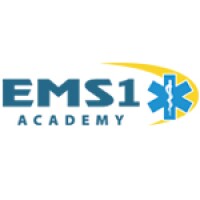The EMS1 Academy features “Module 14: Critical Thinking and Clinical Decision Making,” a one-hour accredited course for emergency services personnel. Visit the EMS1 Academy for more information.
“You’re teaching it wrong. Everybody teaches it wrong. You need to start at the back of the book, not the front.” — Nancy Magee
That assertion certainly raised my eyebrows, especially as it was coming from my girlfriend, business partner and assistant instructor. So, I smiled tolerantly in a “she’s so cute at this stage sort of way,” and inquired sarcastically, “And how would you like me and the rest of the world to start teaching? Start the class with Chapter 46 on Terrorism and WMDs and end it with Chapter 1, The EMS System?”
Most of you can imagine how that was received.
Nonetheless, my week in the doghouse gave me time to reflect on how I was teaching my EMS classes, and how I would change them if I could. I had flipped my EMS classroom five years before, and that change worked very well. I was graduating students who were more skilled, more knowledgeable and better prepared for an EMS career than ever before.
Yet, if I was honest, those first few chapters of the textbook were a bit of a slog before we got to “the good stuff.” Oh, they were an important slog, and I tried to make the material as relevant and engaging as I could, but the unspoken message I constantly got from students was “We can’t wait to get to the good stuff.”
So, hat in hand, I approached Nancy again. “Um, Nancy? Got a moment? I was wondering … um … what exactly did you mean by start at the end of the book?”
Now it was her turn to smile tolerantly. “What’s the first thing a student does when he gets his textbook?” she asked.
“I dunno. Write their name in it? Bitch about how thick it is? Wonder why I say Joe Mistovich is a magnificent bastard? What?”
“No, silly. They flip to the back and look at all the gory pictures and wonder when they’ll get to see all that stuff. The good stuff needs to start at the beginning of the course, not the end. How many times have I heard you complain that your students got some apathetic burnout as a preceptor, or barely did any calls on their ambulance rotations?”
“All the time,” I admitted.
“If the students were seeing real patients every week, from the beginning of the course, that wouldn’t be such a problem, would it? More patients, more time to learn pattern recognition, more chance of exposure to a good preceptor. And they’d graduate in the same amount of time, having seen hundreds of real patients already, already knowing how to talk to someone besides you playing a role.”
And then it hit me: I’ve been teaching my EMT classes backwards. And when did I become that stodgy old EMT instructor resistant to new ideas?
Awareness-proficiency-mastery EMT educational model
And so I find myself in unfamiliar territory. I’m going back to school, so to speak. I’ll be learning just as my students do, watching Nancy’s approach to EMS education and organizing the nuts and bolts background of conducting an EMT class while I watch her put her vision into practice.
We’re going to follow the “awareness-proficiency-mastery” model of EMT educational objectives, focusing heavily on simple awareness at the beginning of the course. The Preparatory module of the class will be a prerequisite obtained through online self-study, and we’ll delve into vital signs and history-taking the first week of class.
From that point forward, as we progress through the curriculum, our students will be seeing real patients at the ED, in the nursing home, and on the ambulance – at least 10 patient contacts a week. They’ll start with simple history taking and vitals, and documentation. They’re going to learn, first and foremost, how to talk to people with multiple morbidities and gather a coherent history, something many EMT students have to learn in the first few months on the job.
As they progress to competence and mastery of the skills and knowledge of an EMT, they’ll be cleared to employ all of the tools and techniques an EMT should possess, and should have completed most the required elements of their skills portfolio. Halfway through the class, we’ll allow students to test for their EMR certification, and allow our past EMR students to bridge into the course.
We’ll spend the last two months of the class delving deep into pathophysiology of disease processes and performing scenarios, and by then, our students will have a real-life frame of reference for what we’re discussing. They’ll end by taking Louisiana’s new NREMT psychomotor EMT exam, consisting of two IOOHS scenarios – one each of medical and trauma (one will be a special populations patient) – and cardiac arrest management.
Preparing street-ready EMTs
If everything goes according to plan – and we realize now that there will be unforeseen obstacles – our students will graduate with well over 100 hours and 200 patient contacts under their belts, and be street-ready EMTs.
We’re calling it EMT 360, and we’ll document our progress here on EMS1. We’ll also be reviving the popular Confessions of an EMS Newbie podcast, with Dan Limmer and me interviewing Nancy and her students, chronicling the pearls and pitfalls they encounter along the way.
Stay tuned to this column for updates. This is going to be interesting … and fun!
Follow Kelly’s progress as he implements a new teaching strategy focusing on patient interaction. Read: EMT 360: A new approach to EMT education














